Asia Travel Pulse
Now, Hong Kong’s Northern Link: A Game Changer for Tourists with Faster Access to Key Locations
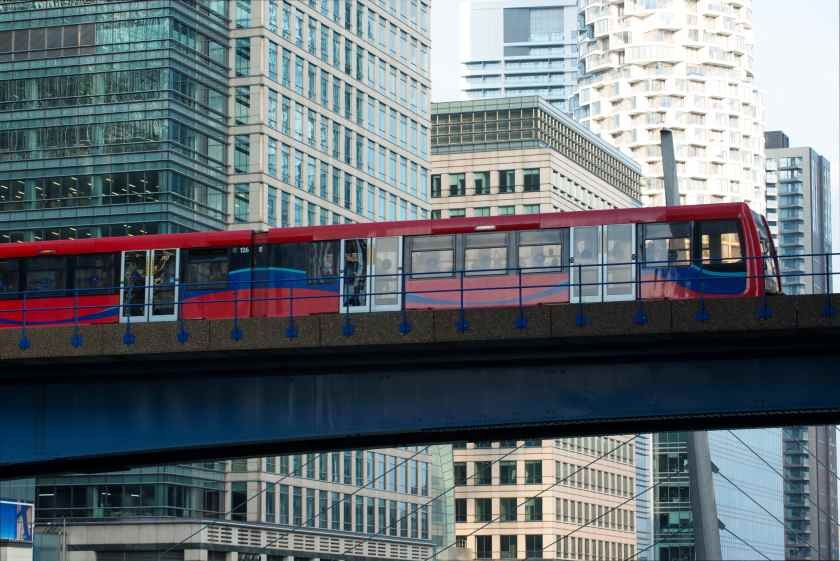
Friday, August 1, 2025
The Hong Kong Government and MTR Corporation have signed an entrustment agreement for the construction of Northern Link, a major railway project to create new travel possibilities in various parts of Hong Kong including between every nook at home HK further Shenzhen. Scheduled to fully open in 2034, the Northern Link is designed to improve tourist access, increase travel between key destinations and meet increased demand for efficient and environmentally friendly public transport.
Note on the Northern Link Railway
Once completed, the Northern Link will form part of Hong Kong’s MTR system: connecting Kam Sheung Road Station on the West Rail Line with Lok Ma Chau Spur Line of East Rail line. The project is expected to include the construction of new stations, such as Au Tau, Ngau Tam Mei and San Tin; While Kwu Tung Station will act as the eastern terminus of this railway line. When finished, the Northern Link will be about 15 kilometers long and connects to a network that is already far reaching.
Phased Construction and Timeline
The Northern Link will be delivered in two stages:
Phase 1 Large serving new town Kwu Tung Station will be completed in around by 2027. It will effectively function as an extension of the East Rail Line, initially operated independently until subsequent phases are completed to connect it into a wider Northern Link network.
Stage 2 Major portion of Northern Link connecting Kam Sheung Road and Kwu Tung scheduled for completion in 2034. This phase comprising the three additional stations being built is a critical part in furthering connectivity between central Hong Kong, the New Territories and Shenzhen boundary.
Opening Up Tourism to Iconic Destinations
One of the major attractions for tourists who may also benefit from Northern Link will be its enhanced connectivity to Hong Kong’s tourist hotspots. The railway line will connect the city’s top cultural, entertainment and commercial districts to each other more quickly, enabling visitors especially those from Southeast Asia who visit Hong Kong for a short period of time quicker access to destinations such as Victoria Harbour, Hong Kong Disneyland Resort and hike up Ngong Ping 360 cable car or explore Mong Kok shopping district with include Hatton Street Market & Fa Yuen Street market among others in Tsimshatsui.
The Northern Link would link together various transport nodes, providing passengers with a more convenient and efficient transit around the city.
Facilitating Cross-Border Travel
Cross-boundary, national network a major characteristic of the Northern Link is to enhance cross-border/nation connectivity between Hong Kong and the Mainland. The East Rail Line extension to Shenzhen will facilitate travel between the two cities for international passengers, and is a significant boon for regionalized transport services in the Greater Bay Area.
For visitors travelling from Shenzhen and elsewhere on the mainland, the Northern Link will offer a direct access point to central Hong Kong that is both fast minimising travel time as well as convenient in terms of reaching other locals such as Hong Kong’s special administrative area airport not mention key shopping areas or cultural sites.
Support for the Northern Metropolis Vision in Hong Kong
The Northern Link fits into Hong Kong’s overall urban development strategy, including the Northern Metropolis project which will make northern parts of the city a new economic and residential centre. This project should encourage tourism and business in the area, and people will come to visit this new neighborhood.
Amid the variations of transportation brought by Northern Link, tourists can approach new developments in northern Hong Kong and Lok Ma Chau Loop area or other emerging cultural and recreational projects.
Environmental and Sustainable Travel Benefits
The Northern Link also supports Hong Kong’s sustainability objectives by providing an environmentally-friendly alternative to travelling in a car or taxi. The project seeks to improve air quality and ease traffic congestion by promoting local public alternative transportation network as Lombok’s natural beautiful destinations.
The public will enjoy faster journeys, improved reliability and the opportunity to take advantage of one of the world’s leading integrated mass transit systems. The emphasis on minimizing the environmental impact of the project is in line with efforts to preserve a sustainable tourism infrastructure for city visitors.
Potential Economic and Tourism Growth
Norther Link should benefit Hong Kong’s tourist trade. With better access to some of the northern districts, consumers will be able to visit less visited areas, distributing tourism gain more evenly across the region. This is bound to lead to an increase in demand for hotels, restaurants and other services in the New Territories which will bring about more employment opportunities as well as business support.
Conclusion
The Northern Link is one of the several important public transport system projects to upgrade Hong Kong’s transport infrastructure. Strengthening access to major tourist attractions, cross-boundary transportation and the overall urban development of Hong Kong, the Northern Link is set as a crucial factor for tourism growth. Focusing on sustainable travel, the initiative will not only enhance tourism but also address long-term economic and environmental objectives in the area. As this project moves toward its completion in 2034, we expect Northern Link to not only be a tourist mecca but also transform the landscape of Hong Kong’s transport system.
Asia Travel Pulse
China Leads International Travel Recovery with Younger Travelers and High Spending Power in 2025: Everything You Need to Know
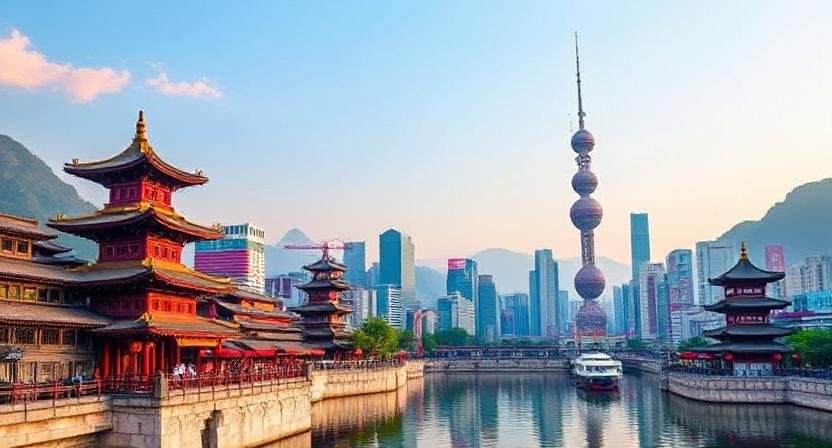
Wednesday, August 6, 2025
The Chinese component to both outbound and inbound tourism is becoming an ever-more important factor in the impressive revival of the global industry. These changes are paving the way for ITB China Travel Trends Report 2025/26, which provides a detailed look at how these trends are affecting and evolving the market landscape. Gleaned from input from 1,400 industry professionals and key players such as Trip. According to the latest thinking on Chinese travel behavior, spending trends and market dynamics amongst others from a post on Jingdaily.com global tourism analytics.
Asia-Pacific Leads the Way in Global Travel Recovery
In 2024, global tourism reached new heights, surpassing pre-pandemic benchmarks with nearly 1.5 billion international trips and over \$1.6 trillion spent by inbound visitors. The Asia-Pacific region, particularly, stands out for its exceptional growth in inbound tourism. While Europe and the Middle East have already returned to full pre-pandemic performance, Asia-Pacific, powered by China’s recovery, is expected to continue leading the world in tourism growth through 2027.
Chinese Outbound Travel Soars Post-Pandemic
In 2024, China’s outbound travel rebounded strongly, reaching over 145 million trips and a 17% increase in spending, totalling ¥5.75 trillion. This resurgence was most visible in Southeast Asia, which captured nearly 40% of Chinese outbound travel, with countries like Thailand, Singapore, Japan, and Malaysia leading the way. Despite the ongoing recovery, Europe remains an attractive destination for Chinese travelers, although it has not yet fully returned to pre-pandemic levels.
Forecast for 2025: 74% of Chinese travel agents anticipate outbound tourism will keep growing, exceeding the figures seen in 2024. The growing demand for independent travel (FIT) is driving a shift from large-group tours to personalized experiences, with a focus on authentic, off-the-beaten-path destinations.
Demographics and Preferences of China’s Travelers
The modern Chinese traveler is increasingly younger, more technologically adept, and focused on unique, immersive experiences. More than 75% of outbound travelers in 2024 were under the age of 45, with a significant proportion in their 30s and early 40s. This shift toward younger travelers aligns with a preference for immersive experiences over traditional sightseeing.
Key trends in product demand include:
- Eco-tourism (61%)
- City sightseeing (60%)
- Culinary tourism (38%)
- Cultural and study tours (33%)
The Rise of Retiree Travel
China’s aging population, which reached 310 million seniors by 2024, represents a growing market. Projections indicate that over 100 million seniors will actively travel by 2025, contributing to a rise in travel-related spending exceeding ¥1 trillion. Senior-focused travel services, like the “Friends Club” by Trip.com, are already seeing significant year-on-year growth, catering specifically to travelers over the age of 50.
High Spending Power Continues to Define Chinese Travelers
Chinese tourists remain some of the highest-spending travelers globally. In 2024, their per-night spending on international activities and products exceeded that of other major outbound markets by 60%. This high-value segment presents a continuing opportunity for destinations and service providers focusing on premium offerings and luxury travel experiences.
MICE and Corporate Travel Gain Traction
The MICE (Meetings, Incentives, Conferences, and Exhibitions) industry in China is seeing strong recovery. Approximately 70% of industry buyers are actively seeking MICE-related products, while over a third of corporate buyers have set aside budgets greater than ¥50 million for the year 2025. Blended or bleisure travel, combining business trips with leisure activities, is becoming a key area for growth. Top destinations for MICE events are Singapore, Bangkok, Kuala Lumpur, and South Korea, with key European locations such as Germany and Switzerland also standing out.
Technological Integration and AI in Travel Services
Tourism companies are increasingly adopting advanced technologies, such as artificial intelligence (AI), to enhance the traveler experience. From AI-driven product recommendations to digital payment systems, technology is reshaping the way travel companies engage with customers. AI-enabled personalization of travel products is particularly relevant as travelers increasingly seek customized itineraries rather than generic packages.
Inbound Tourism to China: Recovery and Transformation
Inbound tourism to China witnessed a dramatic recovery in 2024, growing by more than 60% and reaching nearly 132 million international visitors. Spending by these visitors surged by 80%, totaling over \$94 billion. A surge of travelers from neighboring Asian markets, including South Korea, Japan, and Thailand, signals a promising outlook for China’s inbound market. Furthermore, inbound visitors are now seeking more independent and authentic experiences, with a particular interest in niche destinations.
Enhanced visa policies, including visa-free programs, and improved air connectivity have significantly contributed to this growth. China is projected to secure 4.5% of the global inbound tourism market by 2027.
Malaysia: A Prime Example of Strategic Destination Targeting
Malaysia has emerged as a prime example of effectively catering to the Chinese outbound tourism market. In 2024, Malaysia saw a significant increase in Chinese visitors, with arrivals surpassing 3.3 million, making it one of the leading destinations for Chinese tourists. The country’s focus on digital payment solutions, visa waivers, and strategic partnerships has fueled this success. Malaysia’s efforts to promote lesser-known destinations such as Penang, Sabah, and Sarawak resonate with Chinese travelers’ increasing preference for unique, culturally rich experiences.
Opportunities and Challenges for the Future
Key growth drivers for China’s travel market include:
- Bleisure and leisure-focused events
Embrace of digital technologies and the growth of AI-driven solutions - Increased luxury tourism offerings
- Government support for MICE and tourism
- Infrastructure improvements and new flight routes
However, challenges such as online fraud in Southeast Asia, visa shortages in Europe, and restrictive travel policies in regions like North America must be addressed to maintain sustained growth.
The ITB China Travel Trends Report 2025/26 — a snapshot of how the travel market in China is taking shape — shows quite a dynamic picture. China is clearly one of the biggest sources of outbound tourists, as well as a target market for inbound tourism. Integration with technology, customization and intelligent reading to differentiate demographic changes from psychographics are three key factors for tourism professionals, DMCs and destinations to rule Chinese travel tomorrow. The bounce-back is not a potential trend — it’s an immediate reality with substantial Return on Investment (ROI) for those who can pivot along with the needs of Chinese travelers.
Asia Travel Pulse
Africa’s air travel lags as Asia-Pacific soars in premium growth
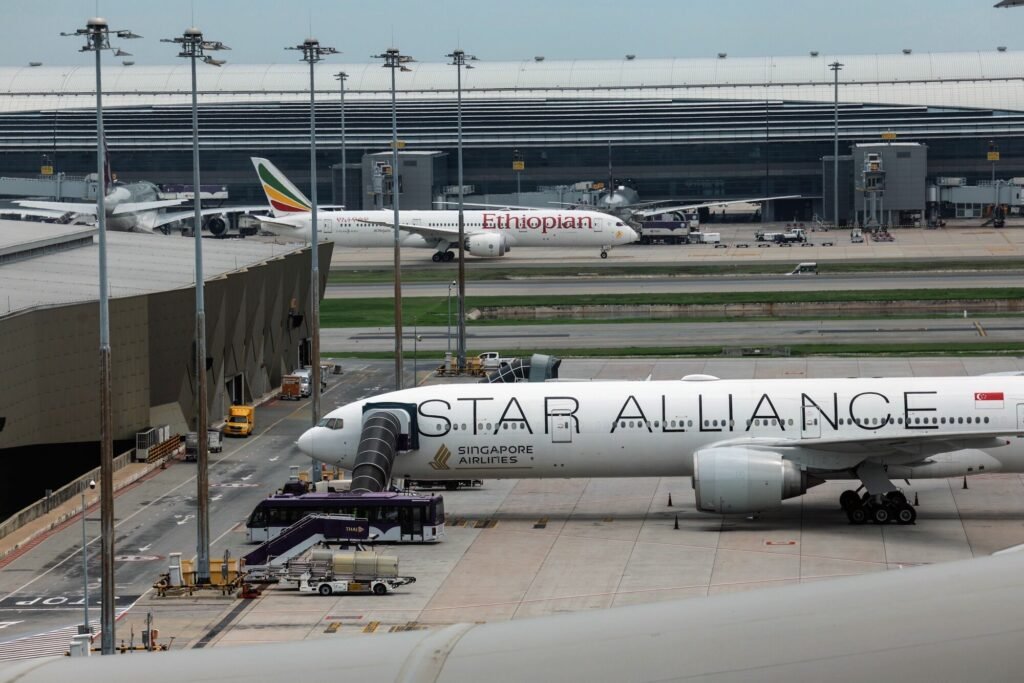
You can also listen to this podcast on iono.fm here.
ADVERTISEMENT
CONTINUE READING BELOW
JEREMY MAGGS: It’s been a bumpy year for global aviation, with passenger numbers soaring and premium class travel surging ahead. The International Air Transport Association releasing its 2024 World Air Transport Statistics report. Let me tell you, it’s a goldmine of insight into how, where and what the world is flying.
I want to discuss these trends and what they mean for travellers, airlines and regional markets. I’m joined by well-known aviation analyst and commentator Linden Birns. Linden, premium class, this is interesting, growing by nearly 12% last year – that’s faster than many economies. Do you think it’s a post-Covid boom, or a deeper shift maybe in airline economics?
LINDEN BIRNS: Hi Jeremy, I think it’s a combination of two things, and it’s where that growth is taking place. Significantly, that boom in premium class travel is happening in Asia-Pacific. It’s growing at 28%, which is phenomenal. I think if you look across not just last year’s numbers, but also this year, what’s been happening, of course, this year is a very different picture globally because of the three Ts: Trump, trade and tariffs.
Asia-Pacific seems to be, I wouldn’t say immune, but more immune than anyone else. It seems to be a very resilient market.
A lot of strong intra-Asia-Pacific trade and commerce and tourism that’s happening. So we’re seeing there that in the premium market, there were about 21 million premium passengers. It was a year-on-year growth of 22.8% last year, just in that market. We’re seeing similar this year. If we look at June’s numbers for this year, year-on-year, it’s 9% up on the same last year.
Read: The world’s biggest passenger planes keep breaking down
Whereas if we look at Africa, for example, we’re a much smaller market. We only represent about 2% of the global market. We’ve got just under 4 million premium travellers who travelled with African airlines last year, and we’re seeing that market growing at around 5.5% for premium travel, and we’re seeing about 11% for economy travellers. Fifty seven million economy travellers travelled with African airlines last year. But again, if we look across it this year, it’s a lot slower.
Listen: FlySafair strike reveals cracks in SA’s fragile airline market
We’ve seen only a 0.8% rise in demand for passenger travel in the African market in June this year compared to last year. A lot of that’s down to, again, increased competition. The fact that within Africa, we’ve got a very low propensity to travel because of the low per capita income compared to places like Asia-Pacific, Europe and North America.
JEREMY MAGGS: Linden, that observation is in the data, because there are 3.3 million passengers on the Johannesburg to Cape Town route, it’s Africa’s busiest route. It tells us a lot then about intra-country versus cross-border travel on the continent and where the balance is.
LINDEN BIRNS: Yeah, absolutely. I was actually surprised by that number. There are more people who travel between Cape Town and Joburg than travel between New York JFK and Los Angeles.
JEREMY MAGGS: Wow.
LINDEN BIRNS: Last year, they only had 2.2 million passengers on that route. So, yes, it’s a real headache. This actually plays into the broader picture. When the president [Cyril Ramaphosa] says, we need to pivot trade and look at intra-Africa and the African Continental Free Trade Area, [you say] yeah, that’s all very good but can people in those markets afford our products and services?
We’re seeing that reflected, as it is, in demand for air travel and for air cargo. Because they do reflect, they’re a very handy mirror or barometer, whichever analogy you want to use, of the state of trade, commerce and economic health.
JEREMY MAGGS: So Linden, in that respect then, and based on your observation and these trends, where should South Africa be focusing its efforts in order to stay relevant and competitive?
LINDEN BIRNS: I think we need to be doing more everywhere, frankly. What’s a little disconcerting is that the Africa-Asia trade lane was looking very healthy until about May this year. Then suddenly it started reversing. We’ve seen those numbers declining for two consecutive months now. So that’s not a good sign. I don’t know to what extent that’s influenced by seasonality, if it’s to do with the holidays or perishable good exports, I’m not quite sure what it is, but it’s not looking great.
You’d think that we would be a very attractive source market as well as a destination, obviously, for travellers, because of the low cost, the weak rand, and therefore the great value-for-money proposition that we offer for foreign travellers.
ADVERTISEMENT:
CONTINUE READING BELOW
You would also think that we’d be a competitive market for investment. But obviously there are more fundamental issues here that we’ve got to deal with in South Africa. We know what they are, to do with crime, corruption, governance, accountability. It’s all very good having all the other things, if we don’t have those, people aren’t going to come.
Listen: SA’s crumbling airports leave airlines scrambling
JEREMY MAGGS: Interesting to see the Boeing 737 and the Airbus A320 families remain the workhorses of aviation. Why are airlines still leaning so heavily on these two narrowbody jets? Is there no other alternative?
LINDEN BIRNS: I think we’re actually going to see even more use of the narrowbody aircraft, as Boeing and Airbus start filling up their order books. The only other viable alternative in the same category, and we’re talking about aircraft in the 150 to 200 seat bracket, the Brazilians with Embraer make aircraft up to about 125, 130 seats. The only other manufacturer that’s looking at breaking into that market is Comac [Commercial Aircraft Corporation of China]. But the aircraft, first of all, is not yet fully certified and it’s not certified outside of China.
I think there’s going to be an issue around how do they break through the resistance and the inertia in the market. They’re going to have to satisfy the banks that those are solid investments, that they’ll hold their residual value. They’ll have to demonstrate to operators that they have good customer support and that there are deep supply lines.
Read: Boeing CEO no stranger to crisis as 787 crash poses new test
It’s already a frustration in the industry at the moment with a supply chain crisis. You can wait up to three years for some aircraft parts at the moment. That’s also why we’re seeing a lot of the older 737s and A320s remaining in service longer than they would have, because the manufacturers aren’t able to turn them out at the tempo they would have preferred to.
They were hoping to be producing them at around about 60 a month each, but they’re down currently at about 30 and 40. That’s meaning that airlines have to keep older aircraft in service for longer than they’d originally intended.
JEREMY MAGGS: Linden, just a quick one in conclusion. Middle East has the highest share of premium passengers. Latin America, Europe, North America all seeing premium travel outpace economy. So fair to say then, that business travel is back now with a vengeance, or at least being redefined in one way or another?
LINDEN BIRNS: I think so. Certainly, last year, remember this report is 2024 numbers and that’s why I qualified it, saying a lot has changed since then. Let’s see how this year pans out. It will be fascinating to see if that buoyancy and optimism that characterised last year, in terms of trade and commerce, continues and that activity.
People obviously still see a lot of value in premium travel. It’s a very competitive space.
As South Africans, I think we are seeing it becoming more and more expensive, relatively speaking. But obviously, for everyone else, that’s seen as a good value proposition.
JEREMY MAGGS: Linden Birns, as always, thank you very much indeed.
Read: These are the world’s busiest airports
Follow Moneyweb’s in-depth finance and business news on WhatsApp here.
Asia Travel Pulse
Thailand Focuses on Luxury Tourism to Maximize Growth Amid Regional Challenges
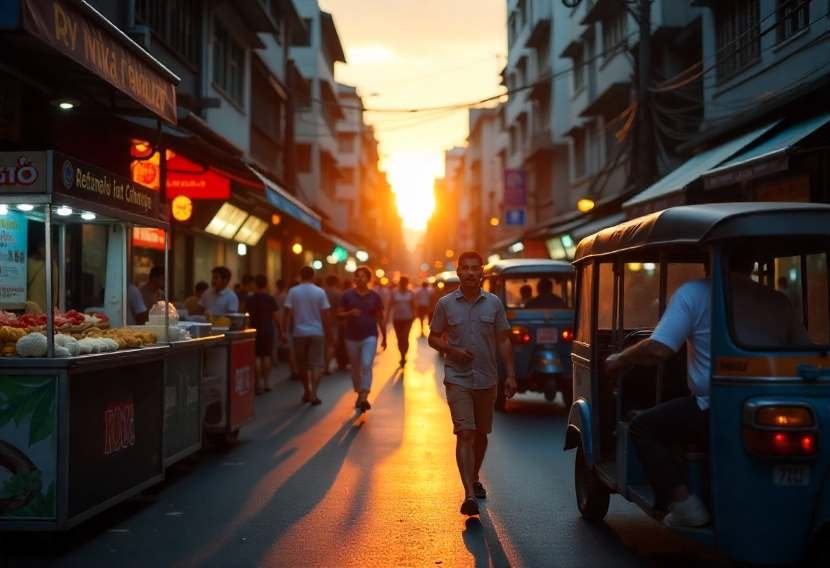
Tuesday, August 5, 2025
Thailand has reached an unprecedented milestone, outpacing its tourism peak of 40 million visitors. But the country now faces the challenge of adapting to the evolving global tourism landscape. The growing number of affluent travelers from the Asia-Pacific region, particularly from countries like China and India, presents a unique opportunity for Thailand’s luxury tourism sector to thrive. However, experts argue that the country must implement a comprehensive strategy to capitalize on this rising demand and maintain competitiveness with other regional tourism giants.
In a bid to tap into this lucrative market, Thailand is being urged to embrace targeted luxury marketing strategies, alongside new public-private partnerships. This approach is essential to attract high-spending tourists, particularly those in the upper-middle and affluent classes across the Asia-Pacific region, who are increasingly opting for regional travel experiences. Despite these opportunities, Thailand’s tourism sector faces challenges, including the delay of key legislation that could enhance the country’s appeal as a luxury destination.
The delay in passing the entertainment complex bill has been highlighted as a major obstacle, as it prevents Thailand from keeping pace with other emerging destinations in the region. Countries such as Singapore, the UAE, and Vietnam have already made significant investments in integrated resorts and luxury tourism, creating world-class experiences for affluent travelers. Meanwhile, Thailand is at risk of falling behind, missing out on the chance to leverage its tourism strengths such as hospitality, wellness, and cultural offerings.
Luxury Tourism in the Asia-Pacific Region: A Growing Market
The Asia-Pacific region, which generated over 648 million tourism trips last year, is expected to continue its growth trajectory, with projections indicating nearly 700 million trips this year and over 800 million by 2027. The region’s expanding middle class, particularly in India and China, is fueling demand for luxury travel experiences both within Asia and internationally.
China alone boasts over 6.2 million affluent individuals, along with 168 million people in the upper-middle class, making it a key driver of luxury tourism. As these travelers increasingly seek high-end tourism experiences, Thailand, with its rich cultural heritage, luxurious resorts, and warm hospitality, is well-positioned to capture a share of this market. However, despite Bangkok’s status as one of the most visited cities globally, the country faces hurdles, including a decline in Chinese tourist arrivals due to perceived safety issues, such as border scams and regional tensions.
The Road Ahead: Integrating Resorts and Addressing Safety Concerns
In the short term, Thailand must focus on addressing these safety concerns, which are a top priority for high-net-worth individuals. The government is encouraged to enhance tourism promotion efforts, utilizing global celebrities and influencers to change negative perceptions. Additionally, cracking down on illegal activities, such as scams targeting tourists, is crucial to ensuring a secure environment for visitors.
Moreover, the tourism sector would benefit from the enhancement of Thailand’s official tourism websites, making them more user-friendly and appealing to international audiences. Drawing inspiration from successful national tourism websites such as that of Japan, Thailand could significantly improve how information is accessed by prospective travelers.
The focus on integrated resorts is another key area of development for the country. Integrated resorts, which combine luxury hotels, entertainment venues, wellness centers, and gaming facilities, are crucial to attracting affluent tourists seeking diverse and high-quality experiences. Thailand has the opportunity to leverage its strengths and build on successful models from other destinations, including the latest projects in Macau and Singapore. However, the delay in passing the entertainment complex bill is limiting the country’s ability to create these integrated resorts, leaving it vulnerable to competition from other destinations that have already made substantial investments in their tourism infrastructure.
Looking to the Future: A Strategic Shift for Thailand’s Luxury Tourism
To compete effectively with the likes of Singapore, the UAE, and emerging destinations such as Vietnam, Thailand must accelerate its efforts in the luxury tourism sector. This includes developing new infrastructure, expanding public-private partnerships, and creating unique, world-class experiences for travelers. Integrated resorts, similar to those being developed in Singapore’s Sentosa and Marina Bay Sands, as well as in Vietnam, could play a pivotal role in boosting the country’s appeal.
As Thailand looks to strengthen its position as a premier destination for luxury tourism, the role of private investors, such as Galaxy Entertainment Group, is critical. These companies can complement the country’s existing tourism strengths and help build attractions that appeal to the growing demand for high-end travel experiences in the region.
Despite the challenges, Thailand remains optimistic about its potential in the luxury tourism market. With the right strategic investments and a focus on safety and unique offerings, the country can continue to attract affluent travelers and maintain its competitive edge in the Asia-Pacific tourism industry.
-

 Brand Stories2 weeks ago
Brand Stories2 weeks agoBloom Hotels: A Modern Vision of Hospitality Redefining Travel
-

 Brand Stories2 weeks ago
Brand Stories2 weeks agoCheQin.ai sets a new standard for hotel booking with its AI capabilities: empowering travellers to bargain, choose the best, and book with clarity.
-

 Destinations & Things To Do2 weeks ago
Destinations & Things To Do2 weeks agoUntouched Destinations: Stunning Hidden Gems You Must Visit
-

 Destinations & Things To Do2 weeks ago
Destinations & Things To Do2 weeks agoThis Hidden Beach in India Glows at Night-But Only in One Secret Season
-

 AI in Travel2 weeks ago
AI in Travel2 weeks agoAI Travel Revolution: Must-Have Guide to the Best Experience
-

 Brand Stories1 month ago
Brand Stories1 month agoVoice AI Startup ElevenLabs Plans to Add Hubs Around the World
-

 Brand Stories4 weeks ago
Brand Stories4 weeks agoHow Elon Musk’s rogue Grok chatbot became a cautionary AI tale
-

 Brand Stories2 weeks ago
Brand Stories2 weeks agoContactless Hospitality: Why Remote Management Technology Is Key to Seamless Guest Experiences
-

 Asia Travel Pulse1 month ago
Asia Travel Pulse1 month agoLooking For Adventure In Asia? Here Are 7 Epic Destinations You Need To Experience At Least Once – Zee News
-

 AI in Travel1 month ago
AI in Travel1 month ago‘Will AI take my job?’ A trip to a Beijing fortune-telling bar to see what lies ahead | China

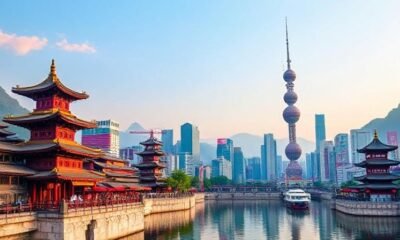







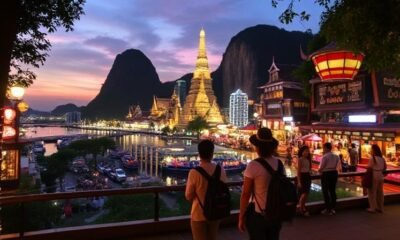



You must be logged in to post a comment Login